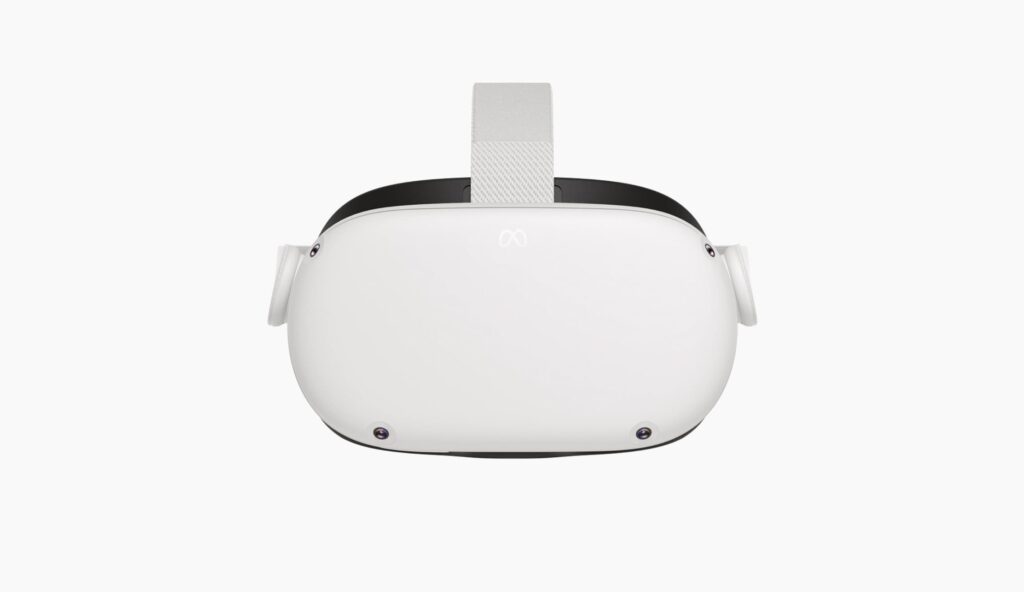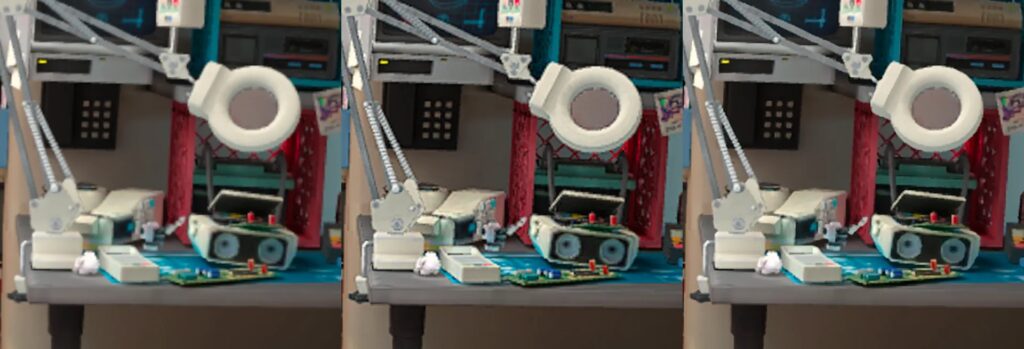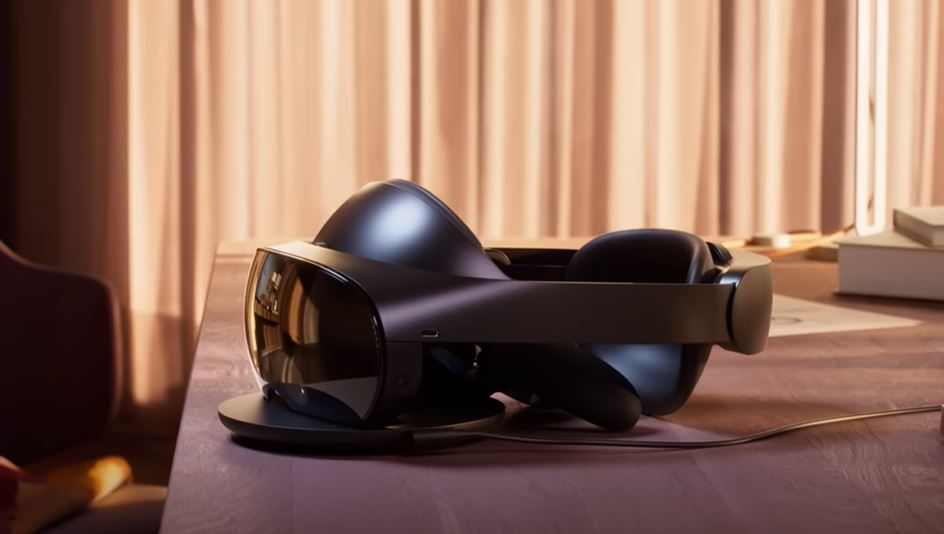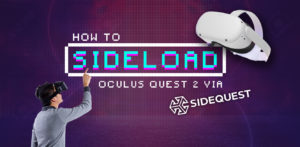Introduction to Super Resolution on Meta Quest 2
Super Resolution is a new tool for programmers made available by Meta, the creators of the widely used VR headset Quest. This update is made to better the visuals of Quest’s virtual reality applications and games. Meta asserts that, compared to older upscaling methods, Super Resolution offers more quality at the same price.
How Super Resolution Improves Upscaling Quality
On the XR development blog, Meta first revealed Super Resolution. Apps created after the release of the Quest V55 upgrade will have access to the new functionality. Super Resolution is an upscaling technique made for programs that, for performance reasons, do not render at the screen’s display resolution.
Super Resolution, as described by Meta, is an edge-aware scaling and sharpening algorithm with a focus on virtual reality. The Qualcomm Graphics Team worked with the developers of Meta Quest to implement optimizations for the game’s performance atop Snapdragon Game Super Resolution. Quest uses bilinear scaling, which is fast but can produce blurring when scaling apps up to the headset’s display resolution. Super Resolution is an alternate technique that can improve upscaling outcomes with low-performance overhead.
Super Resolution is a spatial upscaling and sharpening method that uses a single pass and works best with Meta Quest hardware. Foveal, or the center area of vision, details are preserved and enhanced by the use of edge and contrast-aware filtering, which also reduces halos and artifacts. The goal of this method is to provide a more appealing and realistic virtual reality experience.
Note that not all Quest programs will have Super Resolution enabled by default. Super Resolution is an optional feature for developers, and even then, Meta recommends weighing the costs and benefits on a per-app basis. Since more processing is needed in high-detail areas of an image, the GPU cost of Super Resolution varies depending on the image’s content. The cost of an item will be reduced if it consists mostly of plain colors or smooth gradients rather than intricate graphics or objects.
Activating Super Resolution on Quest 2 for VR Apps
On the Quest 2, activating Super Resolution is a simple process. To activate this function, please refer to the following detailed instructions:
- Step 1: First, check that the firmware on your Quest 2 is up to date. Apps developed after the Quest V55 upgrade can make use of Super Resolution.
- Step 2: Put on your Quest 2 headset and turn it on to move on to Step 2.
- Step 3: Press the Oculus button on the right side of the headset to access the main menu.
- Step 4: Fourth, pick “Settings” from the primary menu.
- Step 5: From the main menu, go to “Experimental Features.”
- Step 6: Find the “Super Resolution” menu item in Step 6. Verify that the Quest 2 you’re using has the necessary firmware installed (V55 or later) if you can’t seem to find it.
- Step 7: Activate “Super Resolution” by toggling the switch next to it. Possible prompts or messages detailing the GPU requirements and benefits of Super Resolution may appear.
- Step 8: After enabling Super Resolution in Step 7, press the back button or choose “Back” to leave the Settings menu.
Congratulations! The Quest 2 headset’s Super Resolution mode has been successfully enabled. Now, the feature will use sophisticated upscaling and sharpening methods to improve the visual quality of compatible apps and games.
Super Resolution – A Developer’s Choice
 Remember, as mentioned before, that not all programs utilize Super Resolution by default. The benefits of incorporating this feature into apps may vary based on the nature of the app and the developer’s attention to detail. It is possible though for developers to take advantage of the Quest 2’s better graphics and immersive virtual reality features. Quest apps for V55+ can immediately benefit from Super Resolution updates from developers. In addition, the Oculus Debug Tool’s Link Sharpening option can be set to Quality for users using Quest Link (also known as Oculus Link) for PC VR content, enabling the sharpening capability.
Remember, as mentioned before, that not all programs utilize Super Resolution by default. The benefits of incorporating this feature into apps may vary based on the nature of the app and the developer’s attention to detail. It is possible though for developers to take advantage of the Quest 2’s better graphics and immersive virtual reality features. Quest apps for V55+ can immediately benefit from Super Resolution updates from developers. In addition, the Oculus Debug Tool’s Link Sharpening option can be set to Quality for users using Quest Link (also known as Oculus Link) for PC VR content, enabling the sharpening capability.
Impact of Super Resolution on GPU Performance
It is worth keeping in mind that in extremely intricate places, Super Resolution could negatively impact GPU performance. Super Resolution places more demands on your computer, so you’ll want to make sure it can manage them. The release of Super Resolution for the Quest platform shows Meta’s dedication to enhancing the capabilities of their VR goggles. Users are anticipating the release of the next-generation Quest 3, which is rumored to have a higher-resolution screen. With the release of Super Resolution, Meta has followed up on the huge performance boost they gave the Quest 2 and Quest Pro back in June. They continue to breathe new life into existing hardware and seem set to dominate the VR market once again with the release of the Quest 3.
Fine-Tuning Super Resolution for Optimal Visual Enhancement

(Default), Normal Sharpening, and Super Resolution (New Quality Sharpening) | Photo: Meta
The majority of virtual reality games run well because they render at resolutions lower than the display resolution. Standard bilinear scaling is frequently employed for upscaling, however, MQSR provides superior and faster outcomes.
Since MQSR is not enabled by default, it is up to the developers to turn it on. There is a GPU performance cost, especially in highly detailed areas, when using MQSR since it delivers smoother edge reconstruction and lowers halo artifacts.
If you utilize a Quest Link and want to employ MQSR, you can do so by changing the Link Sharpening setting in the Oculus Debug Tool to “Quality.” This option can sharpen and improve rendering times by up to two times, depending on the content being rendered.
Unity’s OVROverlay and OVRManager, as well as the OpenXR extension’s XR_FB_composition_layer parameters, make it possible for developers to incorporate MQSR in their games.
With the release of Quest Update v55, Meta Quest Super Resolution became available. The update has been released since late June, however, it may not be accessible in all regions just yet.
Meta Quest Super Resolution, unlike NVIDIA’s DLSS (Deep Learning Super Sampling), is not an AI-based system. Meta, meanwhile, is working hard to discover AI-based upscaling approaches, which may necessitate future chipsets.
Software and Hardware Compatibilities
Good news, both the Quest 2 and the Quest Pro headphones are suitable for use with the Quest Super Resolution function. It uses the Snapdragon Game Super Resolution (GSR) software innovation developed by Qualcomm. Designed for the Adreno mobile GPUs available in Qualcomm Snapdragon chipsets, Snapdragon GSR functions in a manner analogous to AMD’s FSR 1.0. Quest headsets use these chipsets. For optimal efficiency, it executes in a single pass.
Activating Super Resolution on Quest 2 for PC VR via Quest Link
There are a few more steps involved in activating Super Resolution on the Quest 2 for PC VR when utilizing Quest Link (Oculus Link). To activate Super Resolution, please see the detailed instructions below:
Step 1: First, plug a USB connection made specifically for Quest Link into your computer and your Quest 2 headset. Check the Quest Link system requirements to make sure your computer can handle it.
Step 2: The second step is to open the most recent version of the Oculus app on your computer. It is recommended to check for updates and apply them before continuing.
Step 3: Third, don your Quest 2 headset, and use the Oculus button on its right side to access the main menu.
Step 4: Pick “Settings” from the primary menu.
Step 5: From the main menu, go to “Experimental Features.”
Step 6: Find the “Super Resolution” menu item. If you still can’t find it, check that the firmware on your Quest 2 headset is at least V55.
Step 7: Activate “Super Resolution” by toggling the switch next to it. Possible prompts or messages detailing the GPU requirements and benefits of Super Resolution may appear.
Step 8: Press the back button or choose the “Back” option to leave the Settings menu.
Step 9: Launch the Oculus Debug Tool on your computer. It’s often placed at C:Program FilesOculusSupportoculus-diagnostics after installation.
Step 10: In the Oculus Debug Tool, navigate to the “Link Sharpening” menu and select “Quality.” For Virtual Reality material on a PC, this will enable Super Resolution.
Step 11: Initiate the Quest Link-enabled PC VR app or game of your choice. Upscaling and improved visuals thanks to Super Resolution should now be available.
And you’re all set! You have just enabled PC VR Super Resolution on your Quest 2 headset with Quest Link! You can now enjoy the enhanced graphics and clearer images of your PC VR games.
Developer Support
Support for Quest Super Resolution will be available in the forthcoming v55 Unity Integration SDK. In version 55, Unity adds a ‘Sharpen Type’ option for developers, with two possible values: Normal and Quality. Contrast adaptive sharpening (CAS) is a lower-overhead process that is more like classic upscaling and is used in the Normal setting while the more resource-intensive Super Resolution technology is used at the quality level.
Meta claims that using the Quality (Super Resolution) setting eliminates stair-casing and blurring associated with bilinear sampling. It improves visual quality by providing smoother edge reconstruction and decreasing halo artifacts.
Meta Discusses the GPU Trade-off for Super Resolution
Meta recognizes that Super Resolution’s precise GPU cost is content dependent. Apps that use fewer colors and more subtle transitions will have a lower GPU cost than those that render realistically detailed environments, characters, and environments.
Meta also brings up some of the current restrictions placed on Quest Super Resolution. Beginning with version 56, subsampled layout support will be available. Furthermore, the compute bottleneck of the app determines whether or not using Super Resolution is preferable to committing the GPU to boosting the eye buffer resolution. Content that is already very close to the display resolution may experience increased temporal aliasing or flickering if Super Resolution is enabled.
Super Resolution on Quest 2 Pro Tips
- Think about the content before activating Super Resolution in your virtual reality apps or games. Super Resolution could influence GPU performance; you should measure the benefits of the improved visuals against this.
- Try out various options and configurations; Super Resolution provides a wide range of customization. If you’re not happy with the output after using the default parameters, you can tweak them to improve the image quality to suit your tastes and the needs of the content you’re working with.
- Keep an eye on how well your Quest 2 headset handles Super Resolution by using the performance monitoring features. Keep your virtual reality experiences running smoothly and at peak performance with the help of performance monitoring tools like the Oculus Performance HUD or third-party applications.
- Unity developers should always use the most recent version of the Unity Integration SDK to guarantee Super Resolution compatibility and gain access to Meta-supplied optimizations and improvements.
Frequently Asked Questions

Photo from Meta Quest YouTube
Can the original Quest headset have Super Resolution turned on?
No, Quest 2 and Quest Pro headsets are the only ones that can take advantage of Super Resolution at the moment.
Can I expect all VR apps and games to benefit from enabling Super Resolution?
No, developers must add support for Super Resolution to their programs. Super Resolution may not enhance performance for every app, and the degree of enhancement will vary based on how it is implemented.
To what extent does Super Resolution tax a GPU?
Super Resolution’s Graphics Processing Unit (GPU) overhead changes with each individual scene. Lower GPU costs should be expected for apps that use fewer colors and more subtle transitions between them.
If I have Quest Link (Oculus Link), can I also use Super Resolution?
Yes, you can enable Super Resolution for PC VR content with Quest Link. In the Oculus Debug Tool for Windows, set the Link Sharpening slider to “Quality” to enable it. A detailed step-by-step guide has been provided in this article.
Does Super Resolution, like DLSS, use artificial intelligence for upscaling?
Super Resolution, unlike NVIDIA’s Deep Learning Super Sampling (DLSS), is not an artificial intelligence-based technique. Modern upscaling and sharpening methods are used, but there is no AI involved. A future chipset may be needed for the AI-based upscaling that Meta is presently exploring.
When using Super Resolution, are there any caveats or restrictions I should be aware of?
Subsampled layout support is scheduled to arrive in version 56. Content that is already very close to the display resolution may experience increased temporal aliasing or flickering if Super Resolution is enabled. Furthermore, the unique app’s computing bottleneck determines whether or not Super Resolution is more useful than allocating GPU power to boosting eye buffer resolution.
Is Super Resolution supported by all Quest 2 VR games and apps?
Developers must incorporate Super Resolution into their programs. Therefore, it is the responsibility of each developer to implement and make use of Super Resolution in their respective virtual reality (VR) software.
Overall
Meta’s implementation of Super Resolution is a major step forward in improving the visual quality of virtual reality (VR) apps and games on the Quest platform. This enhancement gives programmers a way to make their pictures crisper by employing sophisticated upscaling and sharpening techniques. Super Resolution can have significant benefits, especially for content with extremely detailed images or objects, but at the expense of GPU performance. Users of Meta’s Quest 2 or above VR headsets may anticipate ever-increasing levels of immersion and visual splendor as Meta continues to hone and perfect this function. The future of VR technology is very exciting indeed!






